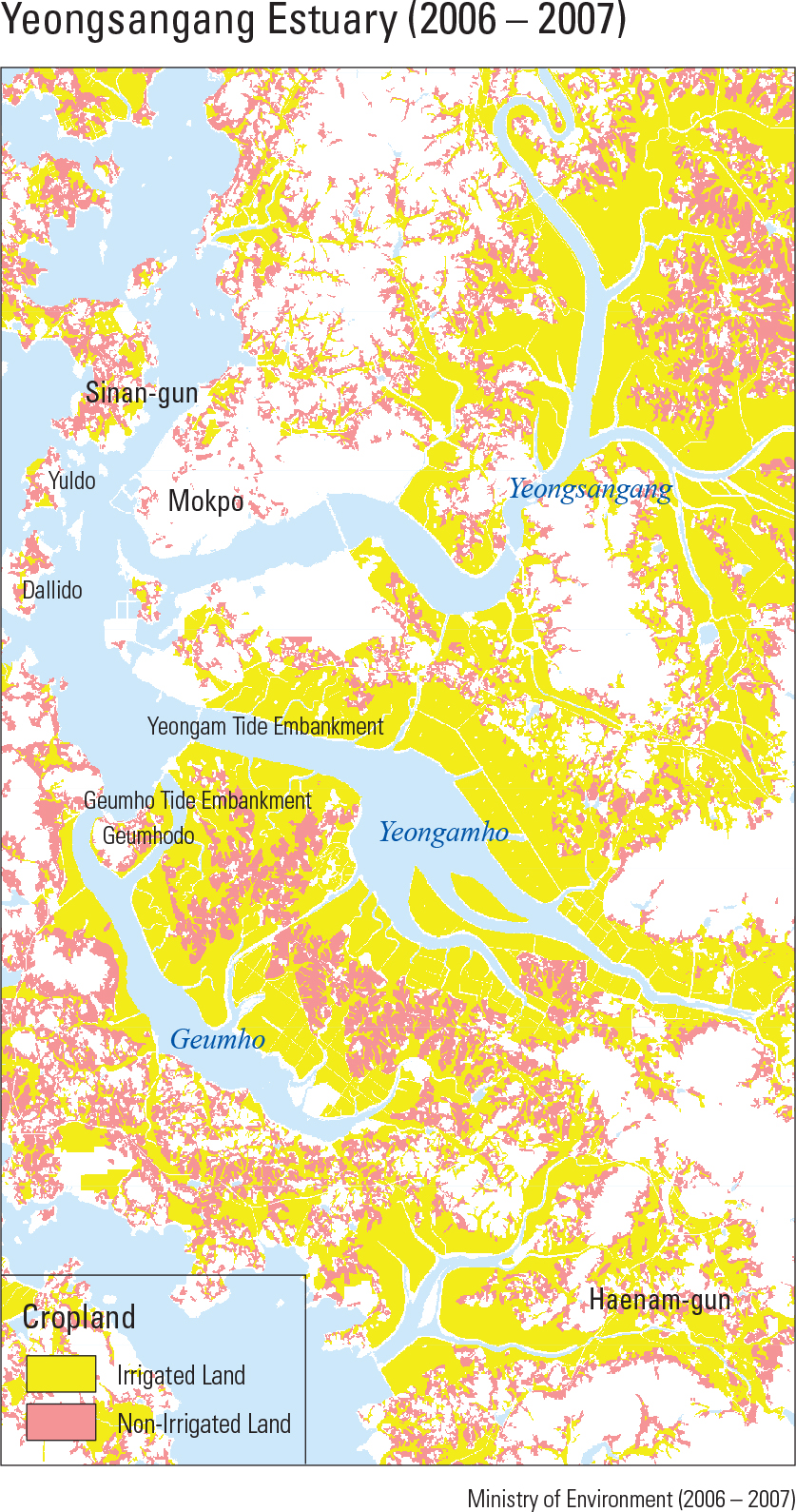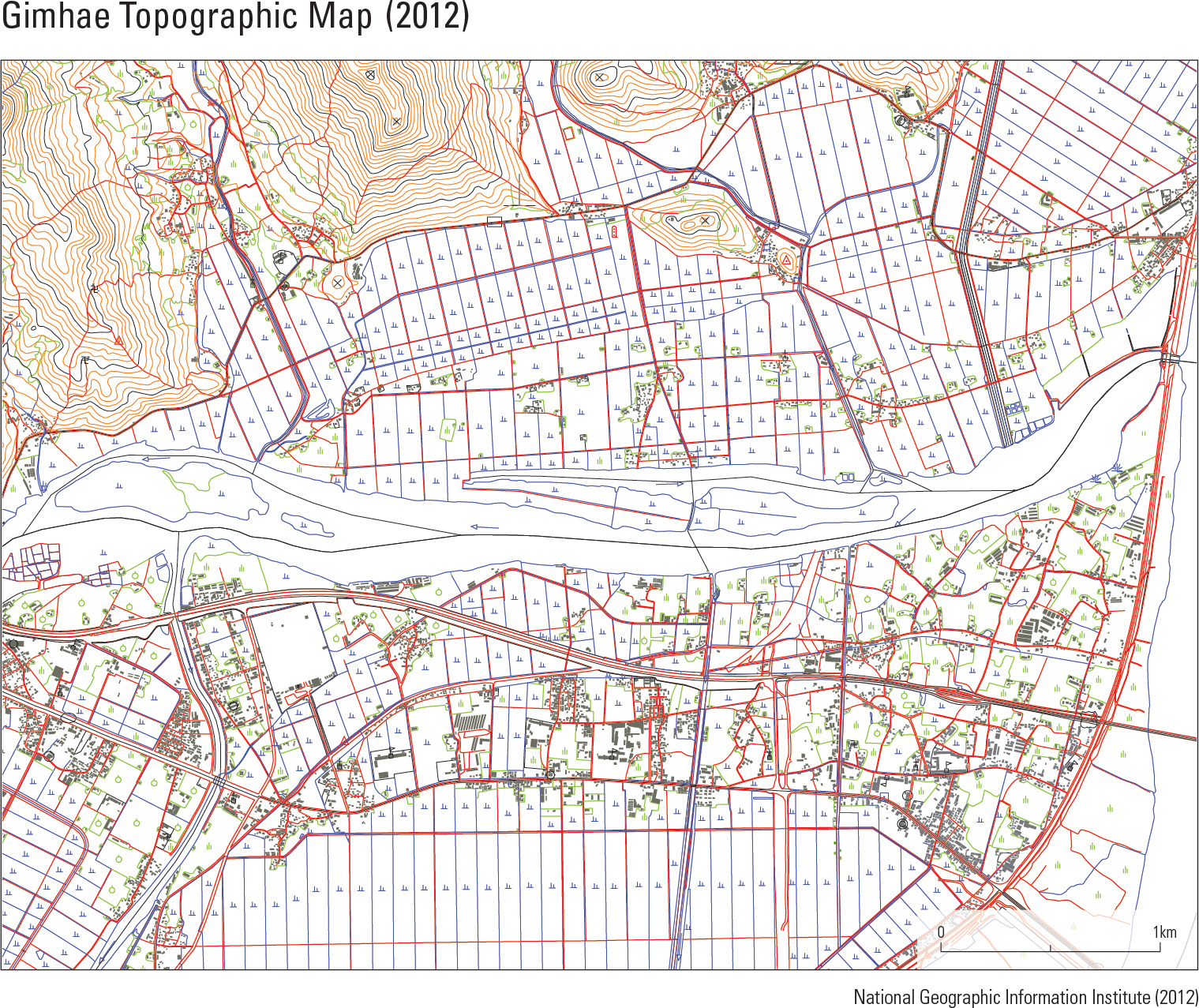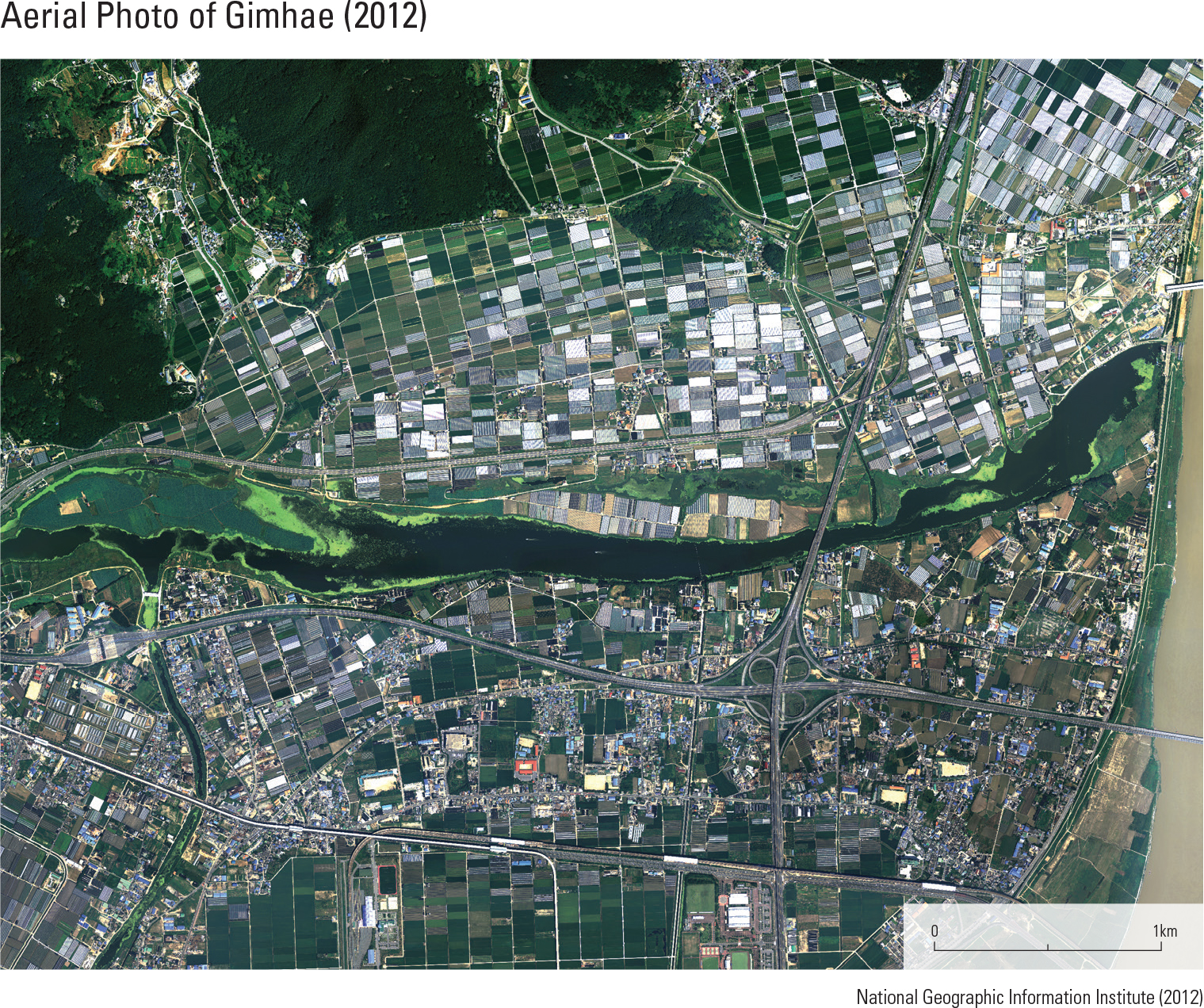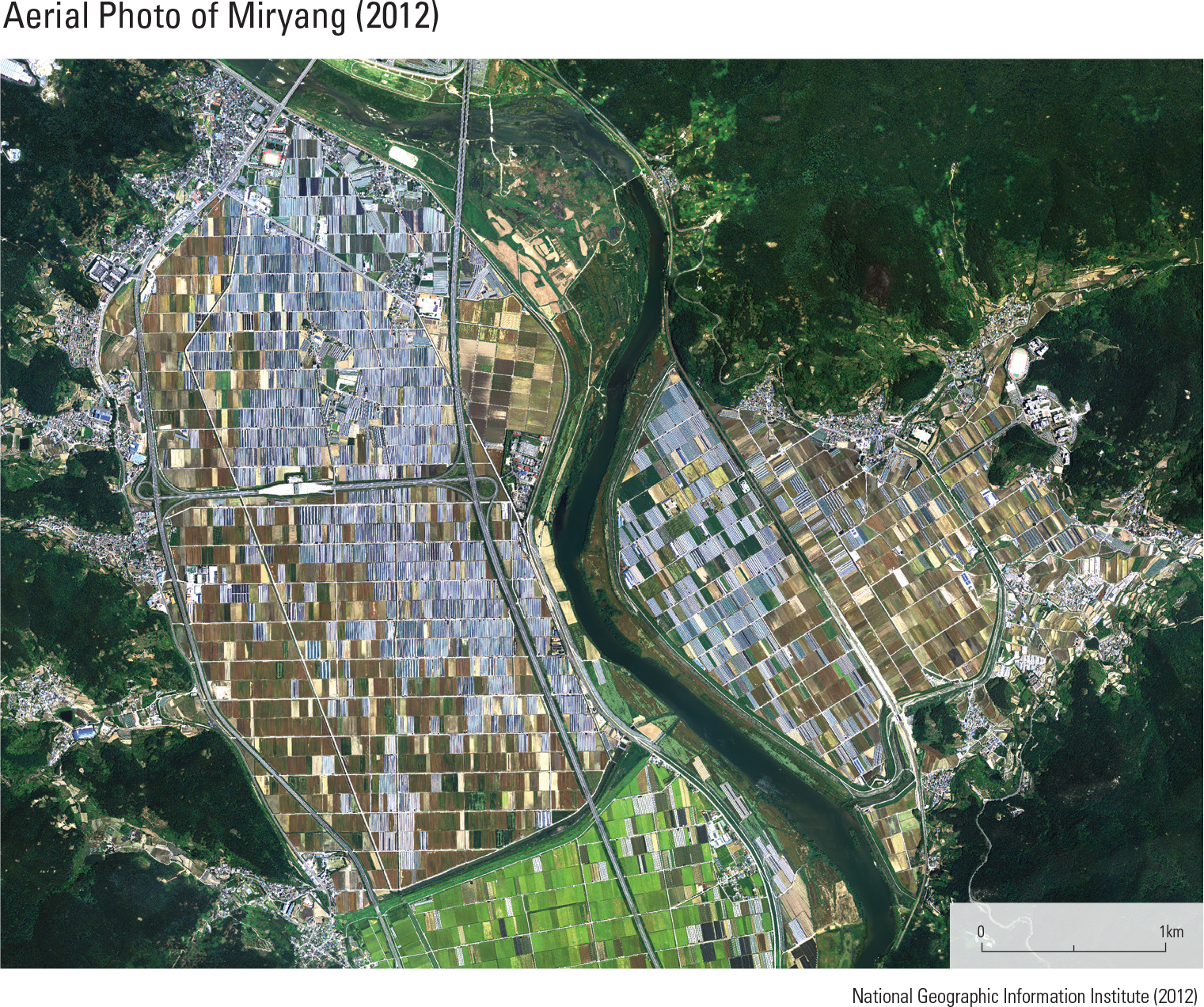English II
Since 1990, agricultural land has been decreasing in Korea due to urban expansion, industrialization, and agricultural population decrease. However, as the drop in agricultural population was more dra- matic in comparison to the decrease of agricultural land, cultivated area per farmer increased as a result. Along the southwest coast, croplands have experi- enced a growth rather than a decrease over the same time period. This can be attributed to extensive rec- lamation projects that included the Yeongsangang, Hwaong, Sihwaho, and Saemangeum reclamations. In the case of Yeongsangang, tidal flats were con- verted to cropland through the construction of the Yeongam (1993) and Geumho (1994) seawalls. The filled areas of Yeongamho and Geumhoho are 12,800 ha and 7,400 ha, respectively, and the reclaimed tidal lands are 7,960 ha and 4,540 ha, re- spectively. Additional reclamation plans for a lled area of 34,000 ha have since been withdrawn due to the recognition of the environmental role of estua- rine tidal ats and wetlands. Another characteristic of cropland use change is the conversion of rice paddies to upland farming elds. This process is especially pronounced in the mountainous area of Gangwon-do, as a growing number of farmers have given up rice farming in order to plant more lucrative crops, such as ginseng and vegetables.
page_2 |











